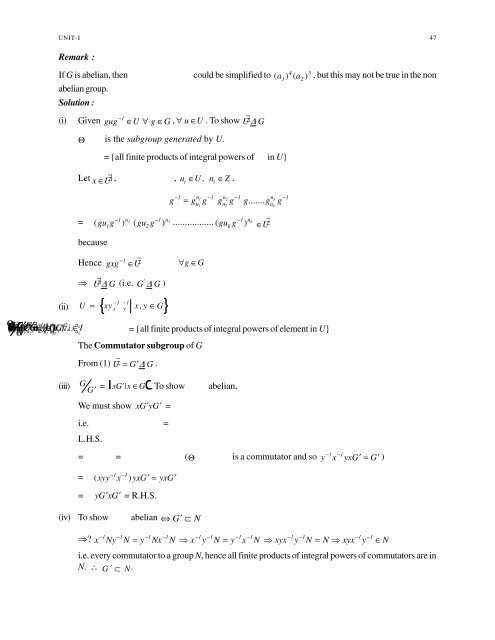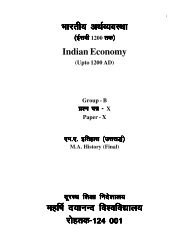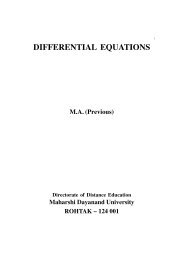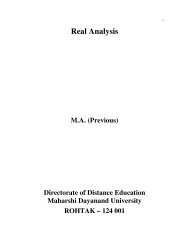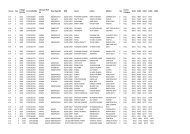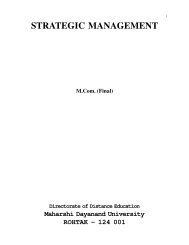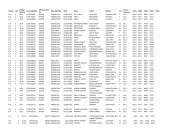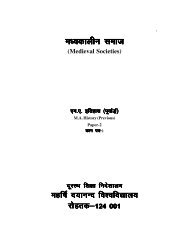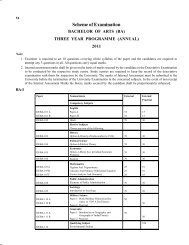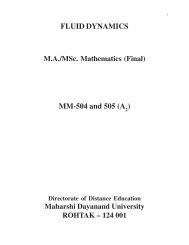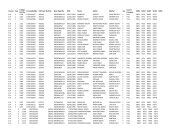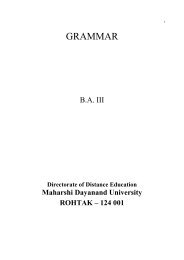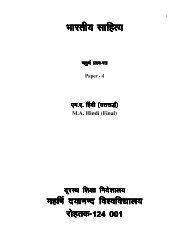Advanced Abstract Algebra - Maharshi Dayanand University, Rohtak
Advanced Abstract Algebra - Maharshi Dayanand University, Rohtak
Advanced Abstract Algebra - Maharshi Dayanand University, Rohtak
You also want an ePaper? Increase the reach of your titles
YUMPU automatically turns print PDFs into web optimized ePapers that Google loves.
UNIT-I<br />
47<br />
Remark :<br />
If G is abelian, then<br />
abelian group.<br />
Solution :<br />
(i) Given gug − 1<br />
∈U ∀ g ∈G<br />
, ∀ u ∈U . To show U ∃ ∆ G<br />
Θ<br />
is the subgroup generated by U.<br />
4<br />
could be simplified to ( a ) ( a ) 5<br />
, but this may not be true in the non<br />
in U}<br />
= {all finite products of integral powers of<br />
Θ∃ Θ 3 5 7<br />
ax<br />
gxg<br />
n n<br />
k<br />
i 1) 11−<br />
2 1 n n<br />
u1 u2<br />
(........<br />
a2<br />
gu<br />
1 n nk<br />
U( ∀G xyG′<br />
yxG′ ∃−<br />
gux ( = ′ = ) u<br />
( a 2<br />
iy xG ∈g G U′ ∃ ′ −1<br />
y −<br />
x yx x)<br />
= , i<br />
yx U∈<br />
U)<br />
G........<br />
1)<br />
∀′<br />
i ∈<br />
1 2k<br />
u<br />
I<br />
G′<br />
k<br />
= {all finite products of integral powers of element in U}<br />
Let x ∈U<br />
∃ ,<br />
, ui U i ∈ Z −1 n1 −1<br />
n2 1<br />
g = gu<br />
g g g<br />
nk<br />
−1<br />
1 u<br />
g.......<br />
g g<br />
2<br />
uk<br />
=<br />
−1 n1<br />
− 1 n2<br />
−1 n<br />
( gu1g<br />
) ( gu2g<br />
) ................. ( gu k<br />
g ) k<br />
∈U<br />
∃<br />
because<br />
Hence gxg<br />
∈U∃<br />
∀g<br />
∈G<br />
⇒ U ∃ ∆ G (i.e. G ∆ G )<br />
(ii) U =<br />
− −<br />
{ xy x y x,<br />
y ∈G}<br />
The Commutator subgroup of G<br />
From (1) U ∃ = G′∆ G .<br />
l<br />
(iii) G G′ = xG'| x ∈Gq, To show<br />
We must show xG′ yG′ =<br />
i.e.<br />
L.H.S.<br />
=<br />
=<br />
=<br />
(Θ<br />
abelian,<br />
1<br />
2<br />
− −<br />
is a commutator and so y x yxG′ = G′<br />
1 1<br />
)<br />
−1 −1<br />
= ( xyy x ) yxG′ = yxG′<br />
= yG′ xG′ = R.H.S.<br />
(iv)<br />
G N<br />
abelian ⇔ ′ ⊂<br />
To show<br />
G<br />
N<br />
−1 −1 −1 −1<br />
−1 −1 −1 −1<br />
−1 −1 −1 −1<br />
⇒ x Ny N = y Nx N x y N = y x N xyx y N = N xyx y ∈N<br />
i.e. every commutator to a group N, hence all finite products of integral powers of commutators are in<br />
N. ∴ G ′ ⊂ N.


